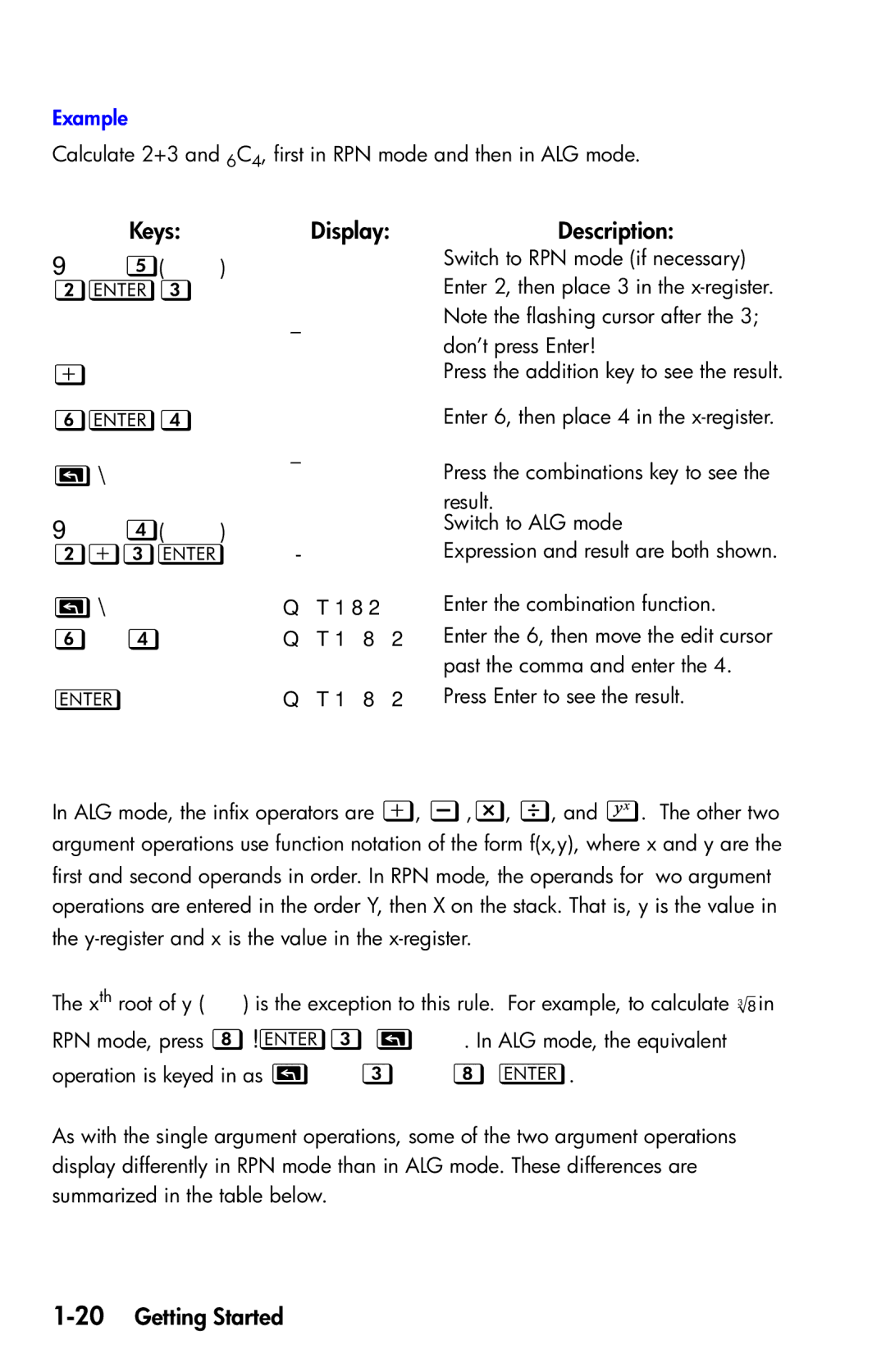Example
Calculate 2+3 and 6C4, first in RPN mode and then in ALG mode.
Keys: | Display: | Description: | |
9() |
| Switch to RPN mode (if necessary) | |
| Enter 2, then place 3 in the | ||
| | ||
| | Note the flashing cursor after the 3; | |
| _ | don’t press Enter! | |
|
| ||
| | Press the addition key to see the result. | |
| | Enter 6, then place 4 in the | |
| | ||
x | _ | Press the combinations key to see the | |
| |||
| | result. | |
9() |
| Switch to ALG mode | |
| Expression and result are both shown. | ||
| |||
|
| | |
x | | Enter the combination function. | |
Õ | | Enter the 6, then move the edit cursor | |
|
| past the comma and enter the 4. | |
| | Press Enter to see the result. | |
|
| |
In ALG mode, the infix operators are , ,, , and . The other two argument operations use function notation of the form f(x,y), where x and y are the first and second operands in order. In RPN mode, the operands for two argument operations are entered in the order Y, then X on the stack. That is, y is the value in the
The xth root of y (') is the exception to this rule. For example, to calculate 3 8 in RPN mode, press '. In ALG mode, the equivalent operation is keyed in as 'Õ.
As with the single argument operations, some of the two argument operations display differently in RPN mode than in ALG mode. These differences are summarized in the table below.
